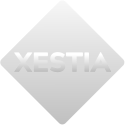1 <!DOCTYPE HTML PUBLIC "-//W3C//DTD HTML 4.0 Transitional//EN" "http://www.w3.org/TR/REC-html40/loose.dtd">
\r
4 <link href="style.css" REL="stylesheet" TYPE="text/css" MEDIA="screen">
\r
5 <meta http-equiv="Content-Type" content="text/html;charset=UTF-8">
\r
6 <title>Kiriwrite Documentation - Index page</title>
\r
9 <div class="menubarback">
\r
10 <div class="menubar">
\r
11 <span class="apptitle">Kiriwrite</span>
\r
12 <a href="index.html">Index</a> | <a href="user.html">User
\r
13 Documentation</a> | <a href="tutorial.html">Tutorial Documentation</a> |
\r
14 <a href="developer.html">Developer Documentation</a>
\r
17 <div class="pageinformation">
\r
18 <span class="pagetitle">Welcome</span><br>
\r
20 This is the documentation for Kiriwrite and it is split into three parts:
\r
23 <li><span class="heading"><a href="user.html">User Documentation</a></span><br>
\r
24 The User Documentation provides information on how to install and use your Kiriwrite installation.
\r
26 <li><span class="heading"><a href="tutorial.html">Tutorial Documentation</a></span><br>
\r
27 The Tutorial Documentation provides some tutorials on how to use certain featurs of Kiriwrite.
\r
29 <li><span class="heading"><a href="developer.html">Developer Documentation</a></span><br>
\r
30 The Developer Documentation provides information on how to create additional presentation modules, database modules and information on translating Kiriwrite into another language.
\r
34 The <a href="guide.html">Kiriwrite Documentation Guide</a> provides information about the symbols that appear while reading the documentation.
\r
